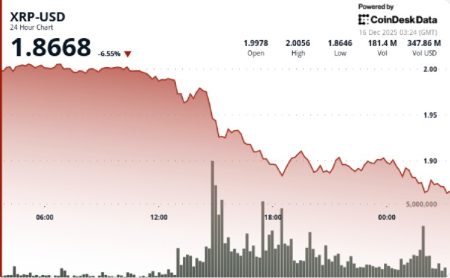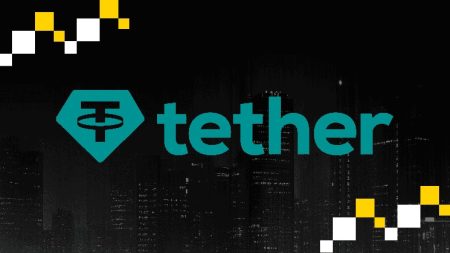Tempo Injects $25 Million into Commonware: A Strategic Bet on Modular Blockchain Architecture
Tempo’s Investment Signals Major Shift in Blockchain Development Approaches
In a significant move that underscores the evolving landscape of blockchain infrastructure, payments-focused blockchain Tempo announced on November 7 that it will lead a $25 million strategic investment into blockchain infrastructure startup Commonware. This substantial financial commitment represents more than just capital infusion—it signals a fundamental shift in how blockchain networks approach their architectural foundations and development strategies.
The partnership extends far beyond funding, as Tempo plans to deeply integrate the Commonware Library—a collection of modular, standalone primitives for consensus, networking, and storage—while becoming a core contributor to its ongoing development. This technical collaboration is strategically designed to liberate Tempo’s engineering resources from the time-consuming process of building base-layer components, allowing their team to concentrate exclusively on crafting differentiated payment features that will set their platform apart in the increasingly competitive blockchain payments space.
Breaking Away From Monolithic Blockchain Frameworks
According to Commonware founder Patrick O’Grady, traditional monolithic, one-size-fits-all blockchain frameworks have become a significant impediment to developer innovation across the ecosystem. These generalized systems, while offering standardization, ultimately force compromises on both performance and functionality—creating a ceiling that prevents ambitious development teams from building applications with truly specialized capabilities and competitive advantages.
“The monolithic approach to blockchain development has created unnecessary barriers to innovation,” O’Grady explains. “By forcing developers to use complete frameworks rather than selective components, we’ve limited the potential for specialized solutions that could drive the industry forward.”
The Commonware Library represents O’Grady’s solution to this architectural bottleneck. Instead of providing a complete but rigid framework, Commonware offers discrete, remixable primitives that allow development teams to construct custom technology stacks without starting entirely from scratch. This approach enables a more nuanced balance between standardization and customization, potentially unlocking new possibilities for blockchain applications across various sectors.
Strategic Benefits for Both Organizations
For Tempo, a blockchain platform recently valued at approximately $5 billion following a $500 million fundraising round led by Thrive Capital and Greenoaks, this partnership offers clear strategic advantages. The company has positioned itself among a select few layer-1 networks actively tackling stablecoin settlement and cross-border payments at scale—areas where performance, reliability, and specialized functionality are paramount.
O’Grady characterizes the complementary nature of the partnership by explaining that Tempo is directing its research and development efforts toward “differentiated payment experiences” while Commonware supplies the “state-of-the-art primitives for everything else.” This division of labor allows both organizations to focus on their core strengths while creating a sum greater than its parts.
The benefits flow in both directions. Once implemented within Tempo’s network, Commonware will gain access to invaluable telemetry data from a high-stakes, real-world payments environment. This operational feedback will be systematically incorporated back into the open-source library, continuously refining and hardening its components for all users—a benefit that extends far beyond the monetary value of Tempo’s investment and contributes to the broader blockchain ecosystem.
The Rise of Modularity in Blockchain Architecture
Commonware’s approach represents part of a broader trend toward modular blockchain design that has been gaining momentum throughout the industry. Rather than building entirely self-contained systems, developers are increasingly seeking composable elements they can assemble into specialized configurations that meet their specific requirements without unnecessary overhead.
Founded in early 2024, Commonware first gained industry attention after launching Alto, a lightweight blockchain prototype specifically designed to demonstrate the potential of its “remixable” primitives. This proof-of-concept showcased how developers could selectively implement only the components needed for their particular use case, rather than adopting an entire framework with features that might remain unused or even create performance limitations.
The startup’s early momentum was validated by a $9 million seed funding round co-led by Haun Ventures and Dragonfly, with participation from prominent industry figures including Avalanche’s Kevin Sekniqi and Solana’s Mert Mumtaz. This initial vote of confidence from established blockchain investors and technologists highlighted the potential market value of Commonware’s architectural approach.
Implications for the Broader Blockchain Ecosystem
Tempo’s substantial investment adds a different dimension to Commonware’s trajectory. As one of the most well-capitalized layer-1 networks currently in operation, Tempo brings not only financial resources but also practical implementation challenges that will test and refine Commonware’s technological offerings in real-world payment scenarios.
“This partnership will enable us to accelerate the development of our modular network infrastructure while simultaneously proving its effectiveness in one of the most demanding blockchain applications—cross-border payments,” says O’Grady. “The telemetry data and operational insights we’ll gain from Tempo’s implementation will benefit not just our two organizations, but the entire open-source community building on our primitives.”
Industry analysts suggest that this investment and technical collaboration could potentially trigger similar partnerships throughout the blockchain space, as other networks recognize the efficiency gains of adopting modular, specialized components rather than maintaining entirely proprietary technology stacks. The model potentially reduces duplication of effort across the industry while still allowing for meaningful differentiation where it matters most.
A New Paradigm for Blockchain Development
As blockchain technology continues its maturation from experimental prototypes to production-ready infrastructure supporting billions in transaction value, architectural decisions have increasingly significant consequences. The Tempo-Commonware partnership represents a thoughtful response to the limitations that many development teams have encountered when trying to optimize generalized blockchain frameworks for specialized use cases.
By providing discrete, remixable primitives that allow teams to build custom stacks without starting from scratch, Commonware is positioning itself at the forefront of a new paradigm in blockchain development—one that prioritizes flexibility, performance, and specialization over one-size-fits-all solutions. Meanwhile, Tempo’s significant financial and operational commitment validates this approach in the context of high-throughput payment networks, an area where performance and reliability requirements are particularly stringent.
As this partnership unfolds, the broader blockchain ecosystem will be watching closely to see whether this modular, primitive-based approach delivers on its promise of accelerating innovation while maintaining the security and reliability that production blockchain systems require. If successful, it could fundamentally alter how future blockchain networks are conceptualized and constructed, ushering in a new era of specialized blockchain infrastructure optimized for specific use cases rather than general-purpose applications.
With $25 million in new funding and a high-profile implementation partner, Commonware now has the resources and real-world testing environment needed to prove that its vision for modular blockchain architecture represents not just an interesting technical experiment, but a viable path forward for the industry as a whole.















